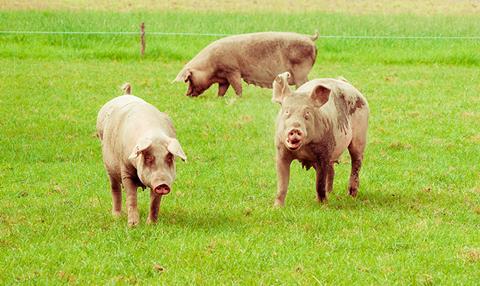Changes in interest rates, plus higher feed, energy, and fuel prices, continue to have an impact on the cost of pork production. However, high pork productivity should offer breakeven, according to the Agriculture and Horticulture Development Board (AHDB).

The latest figures from AHDB found that compound spot feed prices have eased during the summer, but have since increased throughout September. AHDB revealed that these costs have not returned to the peak figures recorded in May and June this year.
Fuel prices continued to fluctuate through September, reflecting the movement in oil prices, but remain elevated compared to 2021. Short and long-term interest rates have also inclined.
AHDB said that as a result, the full economic cost of pig production is currently estimated to be 224p per kg deadweight in September, assuming average technical performance for June 2022 year-on-year.
For September, standard pig prices (SPP) and all pig price (APP) are recorded to be 200p and 203p per kg deadweight. On a full economic basis, AHDB figures found that pig producers performing at an average technical level will be losing £18 to £20 per pig slaughtered.
AHDB commented: “Assuming the same cost base, pig producers performing at the same technical level as those in the top third means the estimated full economic cost of production is 194p per kg deadweight. This higher productivity should result in at least a breakeven situation, or possibly a small positive net margin.”
Many producers in the pig industry started making losses in October 2020, and the cumulative loss across all producers is now estimated at over £700m. These figures are calculated based on the overall average performance of the industry, the numbers of clean pigs slaughtered and the usual AHDB cost of production estimations.
This story was originally published on a previous version of the Meat Management website and so there may be some missing images and formatting issues.















